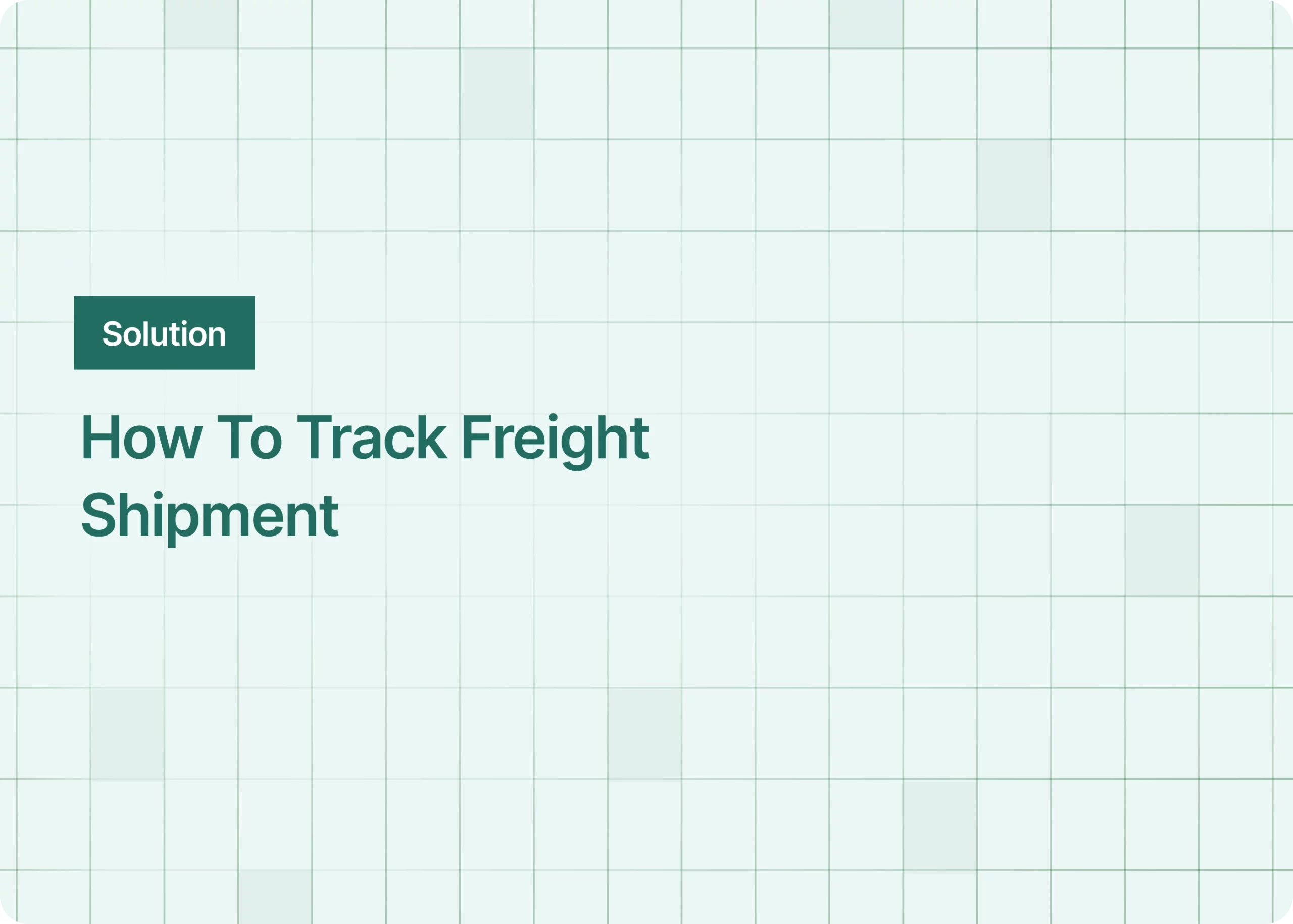Losing contact with a shipment’s location has proven to be detrimental in the shipping process. The shipment may be stuck at a port, unable to leave. Or it may be stuck in an unmoving boat for 106 days. Even worse, it might have just gotten lost. That’s why being able to track freight shipment is so important.
Why is freight tracking important?
The short answer: people want to know where their shipments are. The shipping process can be unpredictable, and anything can happen. Being able to track shipments can alleviate worries and allow shippers to prepare contingency plans.
How does freight tracking work?
Before a shipment can start its transportation journey, it gets assigned a unique tracking number or a PRO number. The number gets recorded whenever it passes through a terminal port to keep track of its location.
What numbers can track freight shipment?
-
Bill of Lading number (BOL)
- As the most important document that you will need, your BOL serves as a receipt for when your freight moves between the carrier and shipper. Using the BOL number is the easiest way to track a freight shipment.
-
Progressive rotating order number (PRO)
- PRO number is typically a series of numbers anywhere between 7-10 digits. It is also combined with a Standard Carrier Alpha Code (SCAC), to create a long barcode. The PRO number will be on everything. From freight pallets to paperwork to the BOL, the barcode will be attached to everything. Since the PRO numbers are saved into a carrier’s software system once they are generated, they are especially easy to pull up and track.
-
Purchase order number (PO)
- This is the main number that includes all the paperwork involved in the freight. It is usually given by the shipper and can be found in the receipt.
-
Shipment reference number
-
- This number is also given by the shipper and can be the PO, BOL, or a phrase that describes the shipment as a whole.
How to track a freight shipment?
-
Transportation management system (TMS) software
- A TMS software stores shipping information and even allows you to find the best carrier for your freight. The software will search for a carrier who can reduce your shipping times and costs. And it is helpful in the shipping process as well! When your freight is ready to be shipped, it can send the pick-up information to carriers.
-
Barcodes
- This is a common way to track freight shipment. The barcode is usually the PRO number combined with the SCAC. By attaching the barcode to the order, it gets scanned along its transportation journey and gives its users a report of where the cargo is in the shipping route. It is the most cost-effective way of freight tracking.
-
GPS tracking
- GPS trackers can be purchased off-the-shelf and can be the easiest solution if you ship crates and pallets on a regular basis. All you have to do is attach a GPS tracking device onto your package, or add GPS tracking to your TMS software. The biggest concern with this method is that your shipment needs to be exposed to the sky to be able to send its signal back to you.
-
Website tracking
- Some carriers offer freight tracking on their website! This way, customers can track their shipments themselves by putting in the tracking number to find where their cargo is. The added bonus of visibility gives customers a better experience and eases their minds.
What are the benefits of freight tracking?
Using freight package tracking systems can give your business advantages. Beyond being able to reduce costs, it also allows you to offer the best customer service possible. With the knowledge of accurate arrival dates, it can decrease customer anxiety, and promote trust and transparency between shippers and customers.
With automated freight tracking, shippers can execute optimal plans, schedule truck drivers ahead of time, and avoid further delays. Electronic tracking also gives notices for traffic delays and reroutes drivers automatically so that freight shipments can stay on track and on schedule.
There is also the benefit of being able to locate any lost shipments with freight tracking. Sometimes cargo gets lost in the shipping process, but if you have a tracking number on hand, you can contact the terminals that the shipment has passed through, and put out a notice for terminals and ports to be on the lookout for your tracking number.
With the help of technology, tracking your freight shipments has never been easier.
Technology has truly changed the game for freight forwarders, and the importance of freight package tracking has never been clearer. The days of shipments being lost in the wind until they eventually (and magically) show up at their destinations are long gone. As your cargo passes through all the checkpoints in the transportation journey, its location gets registered and accounted for.
With the help of GoFreight’s real-time tracking, you too can know the location of your shipments throughout the whole shipping process. With our synchronized EDI-integrated, real-time tracking system that supports ocean, air, and rail freight, users can access the ETA/ETD of their cargo through GPS and AIS systems.
Contact us to learn more about how modern freight forwarders utilize real-time tracking data to navigate through any obstacles the shipping process may throw their way. Our customer service team will be willing to answer any questions you may have.








